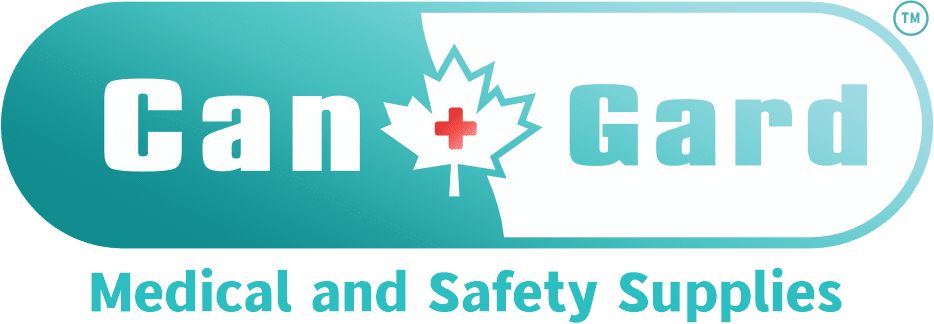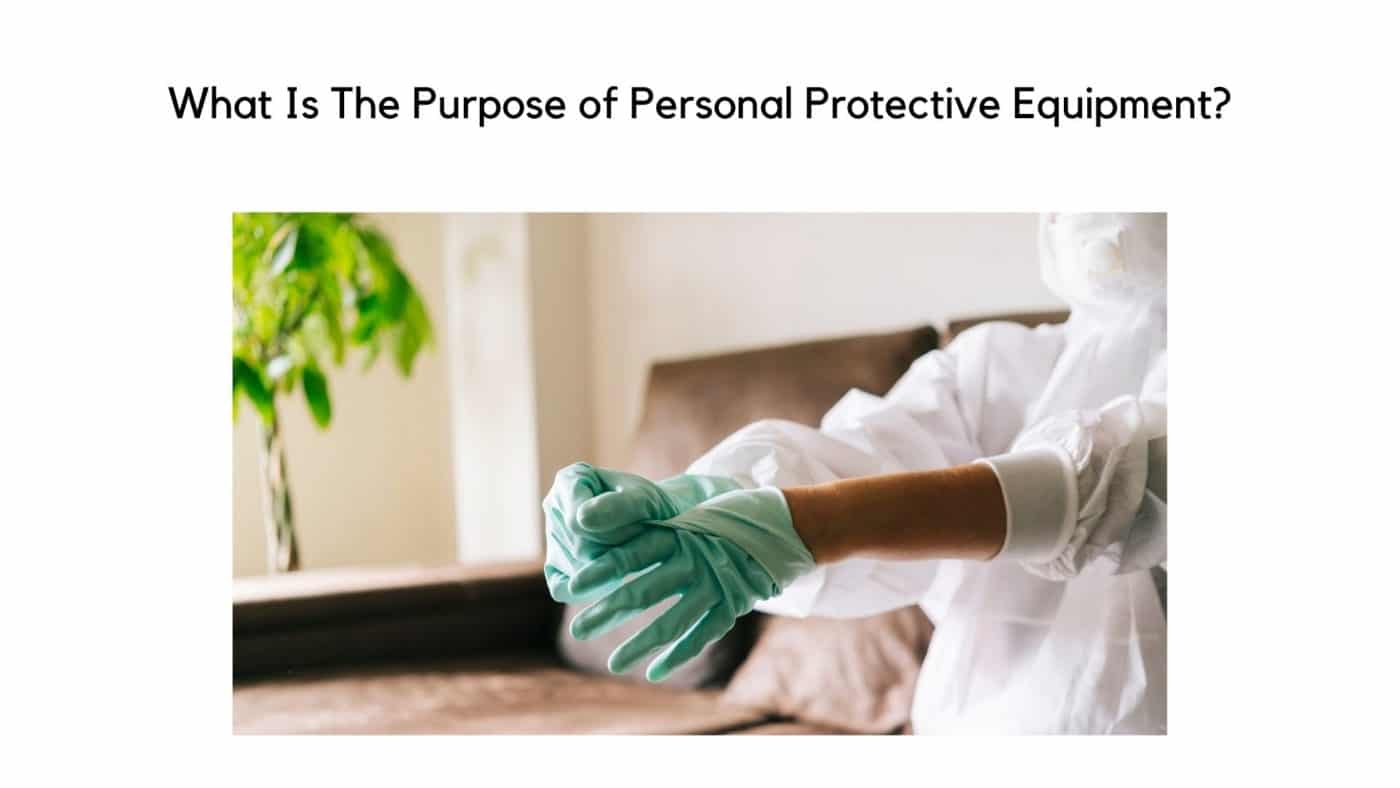No products in the cart.
First Aid/PPE
What Is The Purpose of Personal Protective Equipment?
Personal Protective Equipment is used in a variety of sectors to protect workers against health and safety issues. The term has been more commonly used in the past year due to the Covid-19 pandemic, with more members of the public wearing PPE in their workplaces and public places.
Due to this increase, PPE has been in short supply. CanGardCare.com is here for all your PPE needs, offering a variety of top-quality options to keep staff safe and protected.
What is Personal Protective Equipment (PPE)?
Personal Protective Equipment or PPE is any item that protects users from harm by minimizing their exposure to hazards. It is commonly used in workplaces to reduce injuries and illness. The type of PPE required is dependent on the workplace – ranging from safety helmets in construction sites, hazmat suits in laboratories to face masks, gowns, and gloves in healthcare settings. When working in settings that present an increased risk, employers have a duty of care to their employees to provide sufficient and appropriate PPE to keep them safe.
When PPE is required, most employers will have some kind of training courses that address the dangers of the increased risk presented and how to use PPE to minimize this risk effectively.
As previously mentioned, the COVID-19 pandemic has increased demand for PPE across the world, not only in healthcare settings but also for the general public in everyday life, with many governments introducing mask mandates.
Recently, the World Health Organisation (WTO) published a document entitled “Technical Specifications of Personal Protective Equipment for COVID-19,” which gave guidance on what protective equipment was recommended for health care and biomedical staff working to tackle the pandemic. Within this document is a list of WHO’ priority medical devices’, which are the most important when it comes to protection from the virus. These include surgical and N95 masks, gowns, gloves, and face shields.
The document includes information for manufacturers of these goods, defining the minimum requirements for each product to ensure that it is of a high-quality and safe to use. All products available on the Can Gard website meet these safety specifications – with safety being our number one priority.
Why Is PPE So Important?
Healthcare workers are at a higher risk of contracting a number of different infections, including COVID-19, as they work in environments where they have a higher chance of coming into contact with an infected person. Additionally, healthcare workers also regularly come into contact with bodily fluids such as blood and therefore need protection from a variety of substances.
While there will be strict cleaning measures in place to reduce these risks in every hospital and healthcare setting, cleaning alone is not a guarantee that healthcare workers are fully protected. This is where PPE comes in. PPE blocks deadly viruses, bacteria, or pathogens from entering the body by covering up exposed parts of the body and clothing, which may become contaminated, leading to transmission further down the line. However, it is essential that personal protective equipment is used correctly, taken off carefully, and disposed of safely in order to be effective.
When Should PPE be used?
Gloves
PPE gloves are single-use items that are already commonly used in medical settings for a multitude of procedures. Medical gloves are used for any contact with patients to avoid the risk of contamination from a bodily fluid or respiratory droplets. They should be removed and replaced between every patient to prevent contamination between each patient. Gloves may also be used in settings where infection levels are high (such as during the current COVID-19 pandemic) to open doors and touch surfaces or handle contaminated material. These should, however, be changed regularly, with handwashing in between, and a fresh pair should be put on for new patients.
If you notice that the gloves are marked or soiled, they should be removed and replaced instead of being washed or sanitized with alcohol products such as anti-bacterial hand gel. Alcohol hand gels have not been tested adequately on medical gloves. Therefore, it cannot be guaranteed that the gel would not impact the gloves’ integrity.
Here at CanGardCare.com, our gloves are made from a material called nitrile. This is a material that is similar to latex, but they have higher hand protection characteristics as they are tearing and -3-4 times more puncture resistant. They are 100% waterproof and are more robust than traditional latex medical gloves. We highly recommend nitrile gloves as part of your Personal Protective Equipment.
Gowns
Gowns made from plastic materials are single-use items that can be worn when in close contact with patients or contaminated areas and materials. The gowns stop any contaminated material such as blood or respiratory droplets from landing on healthcare workers’ clothing or skin. Like gloves, gowns should be changed if they are visibly marked or soiled and should only be worn for one patient. This again reduces the chances of cross-contamination.
There are some examples of non-disposable gowns; however, they would need to be properly decontaminated before they can be used again, which can be a lengthy process. CanGardCare.com stocks not one but two types of disposable gowns as we believe that these are the best way to stop contamination. Our medical disposable personal isolation gowns with sleeves have elasticated cuffs, that when combined with gloves, further help reduces contamination.
Masks
During the current COVID-19 pandemic, the Canadian Medical Association and Government have recommended using masks to help reduce community transmission. This is especially important in healthcare settings where infection rates may be higher, and contact with COVID patients is likely.
Masks and eye protection are also worn as standard during a number of procedures to reduce the chance of contamination from blood, respiratory droplets, or other body fluids.
Medical companies and healthcare establishments have guidelines on what type of masks are appropriate in each healthcare setting. CanGardCare.com stocks various masks from popular N95 masks from level 1 to level 3 medical-grade masks.
When wearing masks for a long time, there is some level of discomfort, but some accessories can be used to alleviate this. Anti-fog wipes are an excellent solution for those who need to wear glasses when also wearing a mask, as they reduce the amount of condensation on lenses. Furthermore, EarSavers can hold masks securely in place without adding pressure to the back of the ears.
Other Personal Protective Equipment
CanGard also has many other PPE types, which can help protect healthcare staff on the front line. Disposable shoe covers can prevent contamination from flooring between rooms, while face shields offer extra protection for the face, which can be used in conjunction with traditional face masks.
The CanGard website also includes products for sectors other than healthcare. Sports masks provide respiratory protection for those undertaking exercise that still want to protect themselves, while dust masks offer protection for those working around fumes and high dust levels. Our website also stocks other essential safety measures such as disinfectant wipes and sprays, large first aid kids, and Covid-19 warning and safety signs to increase levels of awareness. All of these combined with personal protective equipment ensure a safe environment for any worker or member of the public.
Putting on PPE
When putting on Personal Protective Equipment, it is vital to wash your hands to decontaminate them. This is especially important if you are wearing gloves as they can be a place where bacteria thrive due to their warm environment that generates moisture.
Ensure that all PPE is securely on so that it does not come loose and that any face marks cover both the nose and mouth. If the face mask can be adjusted at the nose, then bend the metal inside the mask for a tighter fit to ensure maximum protection.
Removing PPE
There are specific ways to put on Personal Protective Equipment. There is also a way to effectively remove PPE to minimize the risk of cross-contamination or self-contamination. It is important to ensure that you do not touch the outer surfaces of the PPE as this is the surface that is most likely to contain dirt, germs, or virus particles.
If you are wearing multiple PPE articles, it is recommended that you remove them in a specific order to try and reduce contamination.
Gloves should be removed first, followed by aprons and gowns. When removing the apron, pull them away from the face and then roll them down the body so that the outer surface is folded in on itself. This means that the cleaner inner surface is now exposed, and the apron is safer to move and dispose of.
Next, you should remove any masks from the face by pulling the strings away from the side of your face, not touching the front of the mask that may be contaminated. After all personal protective equipment has been removed, it is important to dispose of it correctly before washing your hands thoroughly to minimize contamination again.
Disposal of PPE
As Personal Protective Equipment could be contaminated with dangerous virus particles by the end of their use, it is important that they are disposed of correctly to prevent contamination. If you are working in a healthcare environment, there may be individual procedures that you need to follow, so check your employers’ guidelines carefully before disposing of any PPE.
If you do not have employers’ guidelines to follow, the Canadian government’s Public Health Service suggests that PPE masks can be disposed of in a lined garbage bag. It is important to put them in the garbage yourself to stop others from having to touch them.
There have also been recent stories appearing in the media of animals becoming tangled in Personal Protective Equipment. Disposing of PPE properly helps prevent this, but it may also be a good idea to cut any loops (such as ear loops on face masks) to make sure nothing can get caught in them.
Conclusion
Personal protective equipment is vital for keeping healthcare workers safe in the workplace while they tackle a pandemic of unprecedented proportions. It is important to ensure that PPE equipment is manufactured to a high standard and is used correctly to minimize the risk of transmission between patients and healthcare staff. A successful healthcare service relies on staff that is healthy and able to work to treat patients, and therefore PPE is vital. Personal protective equipment protects not only healthcare workers but also their families and communities. Therefore should be at the top of any healthcare provider’s priority list.

